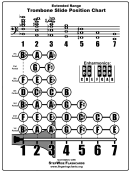

It’s capacity for beautiful, warm tones as well as sharp, bright sound allowed early jazz musicians to experiment with their brand-new style and create tunes that covered a vast range of timbres and feelings. The trombone has been known as a staple in jazz music since its birth in the late 19th century. Early versions of the saqueboute had a smaller bell at the end, which was gradually widened over time in order to allow the instrument to make even louder and more bombastic sounds. Originally called the saqueboute, the instrument was used primarily in church functions and services until the early 1800s, when it was introduced within the world of popular classical music. The trombone as we know it today was first created in Europe around the year 1450. Your instrument’s unique tone and incredible dynamic range will make you stand out in any musical situation, improving your performance abilities as well as your comfort level with improvising and making up your own parts. Whether your dream is to join a jazz band, an orchestra, a marching band, or a touring pop group, you can make yourself indispensable by becoming an amazing trombone player. If you’ve been looking for a way to connect and make music with other musicians, you’ve found the perfect solution with trombone. Prioritizing regular trombone practice in your daily life in order to gradually improve your skills will teach you discipline, which can positively affect your sense of dedication to your work, your family life, your interpersonal relationships, and much more. Learning the trombone also has several of the same benefits as learning any instrument. Plus, the trombone’s sound is powered completely by your own air supply, meaning you’ll see a noticeable change in your lung strength as well as your core, arm, back, and shoulder muscles. The trombone is a relatively heavy object that has to be supported by your arms, shoulder, back, and core in order to be held up correctly while playing. One of the most underrated benefits of learning to play trombone is the effect that it has on your physical health. This unique instrument can be utilized for any style and can even provide you with a tool to write your own music. If you have been thinking of taking up an instrument but aren’t sure where to begin or which one is right for you, the trombone is an excellent option. Though the trombone player in an orchestra, jazz band, marching band, or pop group may commonly be found in the back, you won’t have any trouble hearing them due to the amazing dynamic capabilities of the instrument. Notes in parenthesis are considered alternate positions.Though the trombone is often involved in a huge range of genres including jazz, pop, classical, RnB, and many more, it’s not often as visible to the public eye as other instruments like the guitar, the piano, or even singing. Slide position chartīasic notes in each partial. In effect, you are able to play a whole range of notes in any given slide position.

#Trombone position chart full
Simply put, the embouchure is how you position your lips on the mouthpiece to get a particular sound.īy tightening or loosening your embouchure you are able to play the full range of the instrument.

In order to play any brass instrument, your embouchure must be strong and in control. It is a French word that roughly translates as "mouth embrace". Trombone Position Chart What is embouchure?Įmbouchure is the word used to describe the facial muscles used to play brass instruments. Practice with a piano, or, if you don't have a piano or keyboard, use an online "piano" like this or an app on your phone. Depending on the note you are trying to play and your particular instrument you will have to make small adjustments. Use it as a visual guide but remember to use your ears.
#Trombone position chart how to
The slide chart below will give you a visual reference of how to position the slide.

Slide position chart There are a total of 7 basic positions on a trombone, each a semi-tone apart. Olek Remesz (wiki-pl: Orem, commons: Orem), CC BY-SA 3.0, via Wikimedia Commons To get us up to speed here's a picture of a trombone: Instead, you use the slide to alter the length of the tubing. It is the only brass instrument that doesn't have valves. Playing the trombone is a lot different from playing most other instruments.


 0 kommentar(er)
0 kommentar(er)
